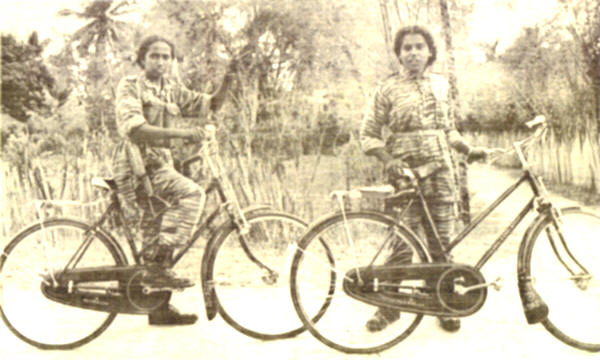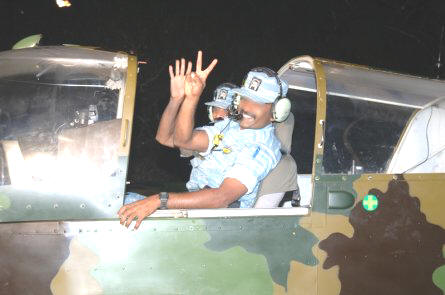Way back in 1983, Velupillai Prabhakaran, on the alert, rode a
bicycle through Jaffna to oversee a spot near the university his
colleagues had picked to ambush Sri Lankan troops. Few people
knew him then, and fewer had heard of the Tamil Tigers. A
quarter century later, the same man, now a legend, has made
history by using Tamil ingenuity to transform two light aircraft
into stealthy bombers to target the air base of his enemy right
in the heart of Sri Lanka.
From the humble bicycle then to the breathless display of air
power in 2007 - this is the extraordinary achievement of a man
who has presided over a sharp and intelligent growth of the
Liberation Tigers of Tamil Eelam (LTTE), taking it from a band
of barely 40 men in 1983 to become the world's first insurgent
group to carry out an aerial attack without any external state
support.
A simple device, the cycle proved an ideal transport for Tamil
militants in the 1970s and 80s. Young men would come riding,
looking like any other cyclist, fire at their targets and coolly
pedal away! A frustrated administration decided to ban the use
of cycles in Jaffna, forcing a local magazine to ask: "What will
the terrorists do next? Take to tricycles? Will tricycles be
banned too eventually?"
Using anything and everything that could advance the cause of
Tamil Eelam was something Prabhakaran learnt and began
implementing a long time ago. During the years he was
underground but largely unknown, he opted to use chilli powder
to keep policemen at bay if nothing else was available. Weapons
bought second hand and stolen or snatched from security forces
followed.
There was of course no stopping his dreams.
In 1982, while residing in Madurai town, Prabhakaran confided to
Tamil Nadu politician P. Nedumaran: "How I wish I would be able
to see at least 100 LTTE armed members walk in a marching column
one day!" Just a decade later, he was presiding over Jaffna
peninsula at the head of a huge LTTE army, having ousted Indian
troops from Sri Lanka's northeast with a blend of guerrilla
tactics and cunning diplomacy.
In that tumultuous decade, Prabhakaran provided the Tigers an
identity as a fighting force and presided over the slow, steady
and secret build up of a group that grew and grew, whatever the
consequences, whatever the price. He was not worried about the
methods, and he certainly did not mind doing away with real or
perceived foes.
What came in the beginning were a secret code, a constitution,
and simple rules of discipline (not always adhered to). Then
came the bigger dreams - uniforms for his men, more weapons,
more modern weapons, deadlier weapons, sanctuaries, training
manuals, training grounds. These too turned into reality over
time.
By then, cycles were no more the mainstay of the guerrillas,
whose leaders, Prabhakaran included, had long grown out of their
teens. They were no more just another militant group. They were
the first among equals, and path breakers in technology that
could kill. Motorcycles, tractors and jeeps were added to the
LTTE arsenal. Deep underground bunkers were dug.
Boats, speedboats, larger vessels and even bigger ships joined
the Tamil Tiger assets, making it the first insurgent group in
this part of the world to have a naval wing. The Tigers also
brought down fighter jets. And Prabhakaran had a huge crop of
suicide bombers - which were the most dangerous of weapons of
all in his inventory.
The LTTE, however, lacked one thing: planes. But it did not lack
innovative capacity. If the Tigers used huge, improvised
catapults to overwhelm the Jaffna Fort, they never stopped
trying to build something that could fly. Anyone who knew the
Tiger mindset was sure the planes would make their appearance
one day. That they did, initially to sprinkle flowers on
cemeteries of LTTE fighters in 1998. Nine years later, as the
country slept, they flew to Colombo to bomb Sri Lankan air force
jets. March 26 may just be the beginning of a new war front in a
country that battles men and women who adamantly refuse to give
up.

